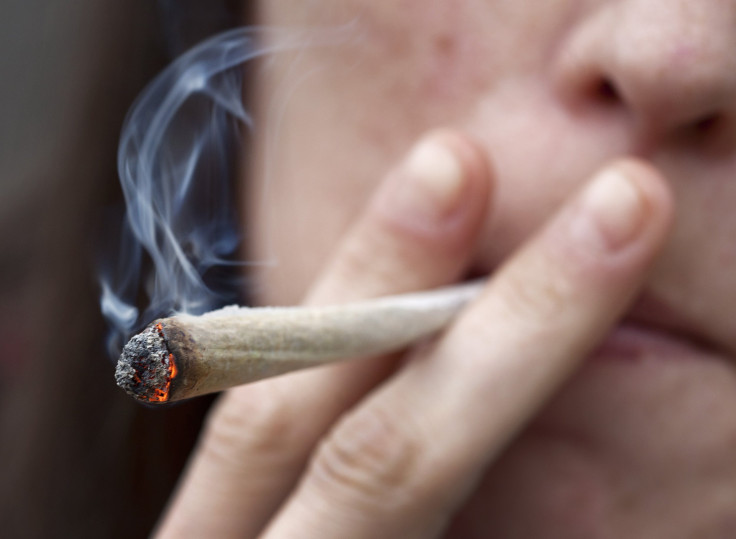Marijuana And The Munchies: How Pot Tricks The Brain Into Craving More Food

Why many pot smokers develop a sudden craving for Cheetos and cheeseburgers, a phenomenon known colloquially as the munchies, has long been something of a mystery for scientists studying marijuana’s effects on the brain’s circuitry. This week, new research has shed light on the familiar hankering, with some unexpected results.
Scientists found that the neurons in the brain involved in regulating hunger acted curiously in the presence of marijuana, doing exactly the opposite of what they normally would do and prompting voracious appetites in mice -- just like in people. Understanding cannabis’ role in inducing hunger, researchers said, could lead to drug developments for people with illness-related appetite loss, such as cancer patients.
“When you’re not hungry, certain neurons are activated. When you are hungry, they’re turned off,” said Tamas Horvath, a neurobiology professor at Yale University and lead author of the study published Wednesday in the journal Nature. “We found that these neurons that are supposed to be turning off are turning on. … It almost seemed paradoxical.” He described it as being like tapping the breaks on a car only to have the car accelerate. The study was the first time scientists were able to pinpoint an anomaly in the brain’s wiring under the influence of marijuana, researchers said.
Horvath and his team looked specifically at neurons called pro-opiomelanocortin, or POMC, which normally release chemicals to suppress appetite. They discovered that, surprisingly, in the presence of certain cannabinoids – the chemical compounds that occur naturally in the cannabis plant – the POMC receptors actually released appetite-fueling endorphins instead of their usual hunger-curbing neurochemicals.
The effects of cannabis on appetite are not uniform, however, said Ken Mackie, a neuroscientist with Indiana University in Bloomington who was not involved in the study. “The acute effect of cannabis is the classic munchies, where you tend to eat high-fatty foods with lots of calories,” Mackie explained. However, “regular cannabis users tend to be leaner than the average population, so they actually have a relatively favorable phenotype.” Further research is needed to understand this paradox, he said.
Previous studies have identified other factors involved in fueling the munchies, such as cannabis’ ability to heighten one’s sense of smell. A 2014 study published in the journal Nature Neuroscience found that marijuana’s most familiar ingredient —tetrahydrocannabinol, or THC — bonded to receptors in the brain’s olfactory bulb in mice, turbocharging the animals’ appetites.
Isolating the ingredients in the cannabis plant that affect certain neurons in the brain could have huge potential for developing synthetic versions of those components for treatment of people with inhibited appetites. “It’s interesting that people are beginning to look at [marijuana] in a scientific way,” a science that is often hampered by complicated legal terrains, said Marta Di Forti, a researcher with the Social Genetic and Developmental Psychiatry department of King’s College London. Peeling away at the complex layers of the endocannabinoid system -- the receptors in the brain controlling mood, memory, pain and appetite – could allow researchers to better exploit the medicinal properties of marijuana in a way that’s safe and highly effective. Only a handful of drugs on the market contain synthetic versions of ingredients found in the cannabis plant, in part because governments that consider marijuana as dangerous a drug as heroin or cocaine rarely approve drugs containing cannabis for human trials.
Most of the people who use cannabis to treat certain ailments are still getting it illegally or from unregulated sources. “The people who I look after in the clinics that do use cannabis, it comes from the black market,” which means they don’t always know exactly what they’re getting, Di Forti said. The goal of such scientific research is to develop cannabis products that are regulated, contain uniform dosages and target very specific parts of the endocannabinoid system. “Luckily when we think about cannabis, we’re not talking about something as dangerous as heroin,” which comes from the same plant as morphine, one of the most potent and effective painkillers known to man, she said.
While researchers said more work would need to be done to identify the exact mechanisms by which cannabis fuels greedy eating, the latest research “simply provides an explanation for the known event that if you smoke a joint, 45 minutes after dinner you start to crave food again,” said Horvath. “If you have a way to selectively affect these neurons, then you could affect metabolism independent of some other aspect of cannabinoid action.”
© Copyright IBTimes 2025. All rights reserved.






















